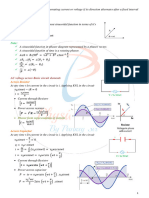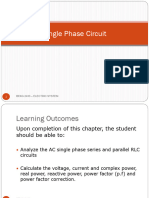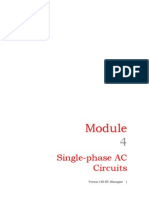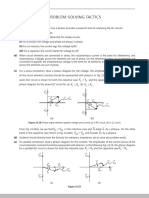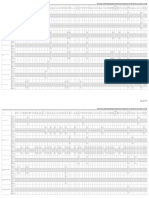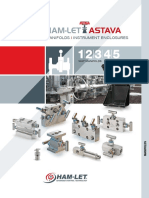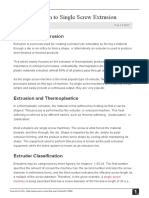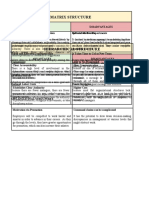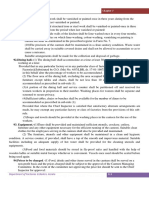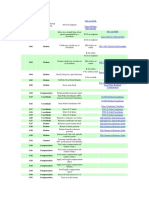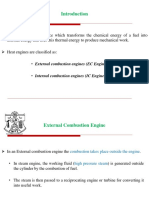0% found this document useful (0 votes)
76 views19 pagesUnit - II AC Circuits: 4 Lectures
Unit II covers AC circuits including:
- Steady state analysis using sinusoidal and phasor representations of voltage and current in single phase AC circuits and the behavior of R, L, and C.
- Combinations of R, L, and C in series and parallel circuits including resonance.
- An introduction to three-phase circuits and star-delta transformations.
The key differences between steady state and transient state are that transient state occurs when dynamic elements like capacitors and inductors are charging/discharging, while steady state occurs once voltages and currents reach final values.
In AC circuits, capacitors and inductors will not behave as open/short circuits as in DC due to the varying magnitude
Uploaded by
LAKSHYA SINGHCopyright
© © All Rights Reserved
We take content rights seriously. If you suspect this is your content, claim it here.
Available Formats
Download as PDF, TXT or read online on Scribd
0% found this document useful (0 votes)
76 views19 pagesUnit - II AC Circuits: 4 Lectures
Unit II covers AC circuits including:
- Steady state analysis using sinusoidal and phasor representations of voltage and current in single phase AC circuits and the behavior of R, L, and C.
- Combinations of R, L, and C in series and parallel circuits including resonance.
- An introduction to three-phase circuits and star-delta transformations.
The key differences between steady state and transient state are that transient state occurs when dynamic elements like capacitors and inductors are charging/discharging, while steady state occurs once voltages and currents reach final values.
In AC circuits, capacitors and inductors will not behave as open/short circuits as in DC due to the varying magnitude
Uploaded by
LAKSHYA SINGHCopyright
© © All Rights Reserved
We take content rights seriously. If you suspect this is your content, claim it here.
Available Formats
Download as PDF, TXT or read online on Scribd
/ 19







